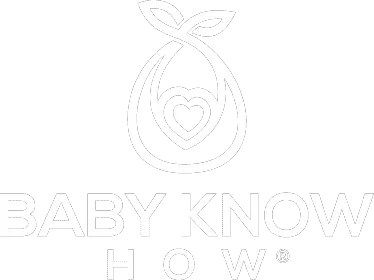If your baby brings up milk after every feed, especially if they cry, it can be very upsetting. You might well be worried whether your little one is getting enough nourishment and you may feel a bit helpless.
The good news is that reflux is very common, and it’s usually nothing to worry about. That being said, it can be uncomfortable for your baby, and messy and inconvenient for you, too.
If you’re wondering how to best help your baby when they have reflux, tere’s what you need to know.
What is Reflux and What are the Symptoms?
Reflux is a term used to describe when a baby brings up some milk during or after a feed. It’s different, however, from vomiting. With reflux, the milk leaks back out of the baby’s stomach because the muscle between their stomach and esophagus (food pipe) isn’t fully developed.
The most common symptom is that your baby spits up milk during or after feeds, often several times a day.
You might also see some other symptoms as well, such as:
- Feeding difficulties. Your baby might refuse feeds, or gag or choke when feeding. (If these occur, contact your pediatrician for advice)
- Persistent coughing or hiccups.
- Crying while feeding, or crying a lot in general.
Some babies have “silent reflux,” where milk comes back up out of the stomach but then goes back down or is re-swallowed. You won’t see this happening, but you may notice that your baby seems uncomfortable or fussy during feeds.
Seven Key Ways to Help Your Baby with Reflux
While some babies are simply prone to reflux, and you may find it doesn’t improve much until after they’re six months old or so, there are a few things you can do to help in the meantime:
1. Offer Smaller, More Frequent Feeds
If you normally feed your baby every three or four hours, try feeding them more frequently—perhaps every two hours. If you’re bottle feeding, make up a smaller bottle than usual. This can help your baby to digest their milk more easily.
2. Pause Regularly During Feeding to Burp Your Baby
If you’re breastfeeding, you may not want to take your baby off your breast frequently. However, it’s important to make sure you give them plenty of time to burp when you change sides. If you’re bottle feeding, pause regularly (ideally after every ounce) to burp your baby. This is vital to do as reflux can be worsened if your baby has swallowed a lot of air.
3. Hold Your Baby Upright After a Feed
Keeping your baby upright not only during feeds but also for 15 to 20 minutes after a feed can help with the symptoms of reflux. So avoid popping them straight down in their crib, or for a kick on the floor. Instead, hold them upright on your lap. This could even be a lovely time to share a story book together as after all, babies are never too young to be read to.
4. Avoid Travelling in a Car After a Feed
If possible, time your journeys around your baby’s feeding schedule. As The UK’s National Childbirth Trust explains, “Most car seats and travel systems have a deep ‘well’ for one static seated position where baby can be slumped in an uncomfortable position. When baby slumps and slouches over like this added pressure is placed on their tummy [which can be] very painful and can increase reflux episodes.”
5. Use a Nipple with Smaller Holes
If your baby gulps down their milk too quickly, that makes it more likely that they’ll bring some of it back up. Using a bottle nipple with smaller holes will slow down the rate of flow. On the downside, it will take longer to get through a feed, but hopefully your little one will keep all or most their milk down.
Almost all baby bottle manufacturers make different types of nipple, so you should find it’s easy to get ones with fewer holes that are compatible with your existing bottles.
6. Use a Thicker Formula (if Advised by a Professional)
For bottle-fed babies, thicker formulas that help the milk stay down in their stomach can reduce vomiting. They do have drawbacks you should be mindful of, though. For instance, they might make your baby more prone to constipation. Keep in mind also that although thickened formulas are available without a prescription, you shouldn’t use them for your baby unless you’ve been advised to do so by a health professional.
7. See Your Pediatrician
You may be wondering when is the right time to see a pediatrician about your baby’s reflex. The NHS website explains that: “Reflux isn’t usually a cause for concern and you don’t normally need to get medical advice if your baby seems otherwise happy and healthy, and is gaining weight appropriately.”
If the reflux starts after your baby is six months old, though, or continues past a year, you should seek medical advice. You should also see your pediatrician if your baby is crying or upset a lot, if they’re refusing feeds, gagging or coughing when feeding, have a swollen or tender tummy, or have a fever.
In general, if you have any concerns about your baby, consult a professional: even if there’s no underlying problem and nothing to worry about, they can at least reassure you of that.
Conclusion
Reflux is often more unpleasant for you than your baby: some babies don’t seem bothered by it at all, though it can mean a lot of laundry and wiping up for you! By trying out the suggestions above, you’ll hopefully find that your baby’s reflux is lessened (even if it doesn’t disappear altogether). A few small changes to the way in which you feed could make all the difference.










